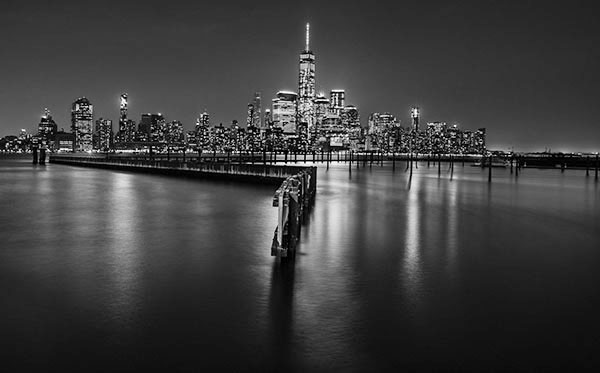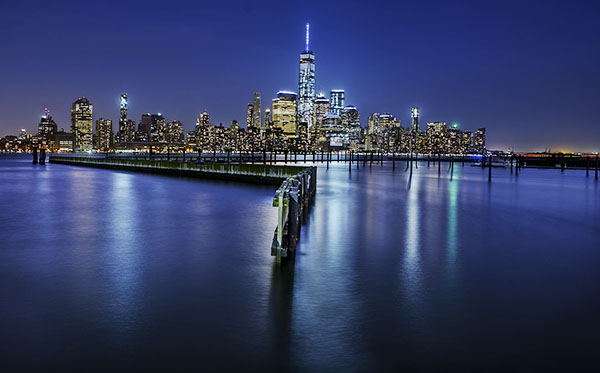Last night I crossed the Hudson to take some night shots of the city from the Jersey side. I had with me the Fuji X-Pro2 and three zooms, the 16-55mm f/2.8, 50-140mm f/2.8, and 100-400mm. That pretty much covered everything I planned on doing, and I used everyone of them at one time or another.
 |
| I did this image in both color and black & white, but ended up preferring the monochrome version. |
I wanted to experiment with shooting at a later time than normal. Typically I try to finish my night shots by 15-30 minutes after sunset, while the lights balance out with the light remaining in the twilight sky. This time I worked into the dark with long exposures to blur the moving water. I also took multiple exposures one stop apart to preserve all the detail of the scene. Instead of using HDR to combine the exposures because I usually do not like the false look it creates, I did it by hand in Photoshop by layering all four or five different exposures and then painting out or using the opacity slider to smooth out the tonal transitions.
 |
| Taken with the Fuji X-Pro2 and 16-55mm f/2.8 lens set to f/11 and four different exposures one stop apart. It took about one minute to blur the water like this. |
By combining several images like this I was able to increase the dynamic range of the scene without having to actually open up shadows in post processing, which would have introduced excessive noise. Instead I was able to keep the ISO at 200 throughout, and with the new 24mp sensor of the X-Pro2 this resulted in a large image with excellent detail and resolution.



Looks great Tom! Wonder if I could use my astro imaging software to stack n process the images. As I don't have and can't use photoshop. To complicated for this old fart. I am enjoying using my xpro2 though. My email is one@xtra.co.nz cheers!
ReplyDeleteThere are several other software programs that can combine images with several varying exposures. Take a look at Photomatix Pro, and PTGui.
ReplyDelete